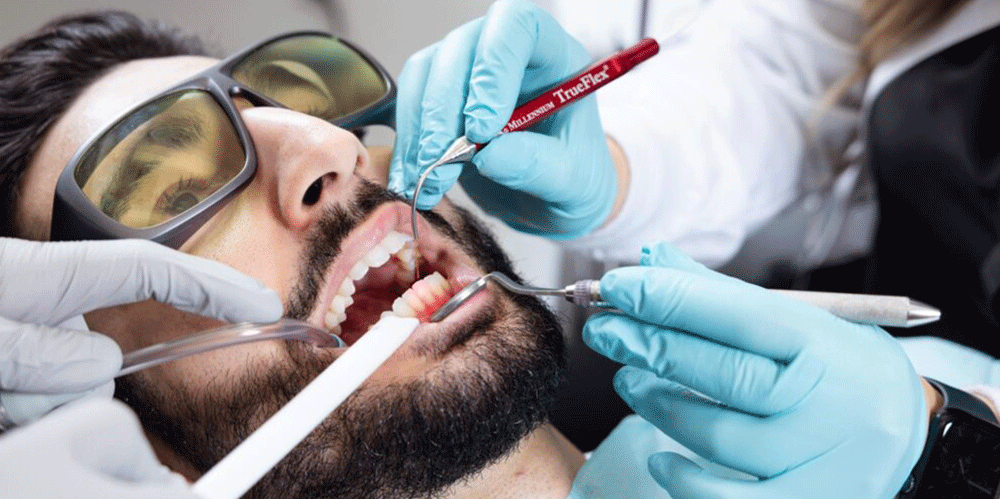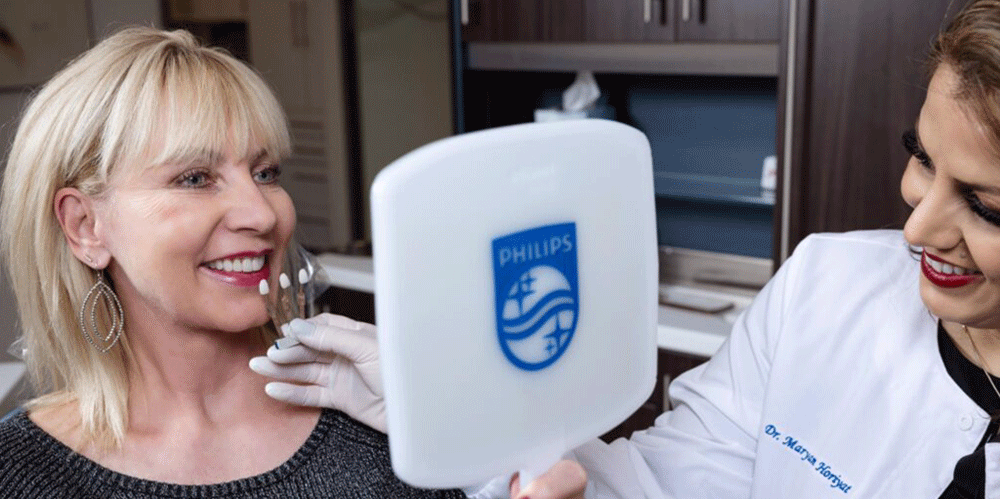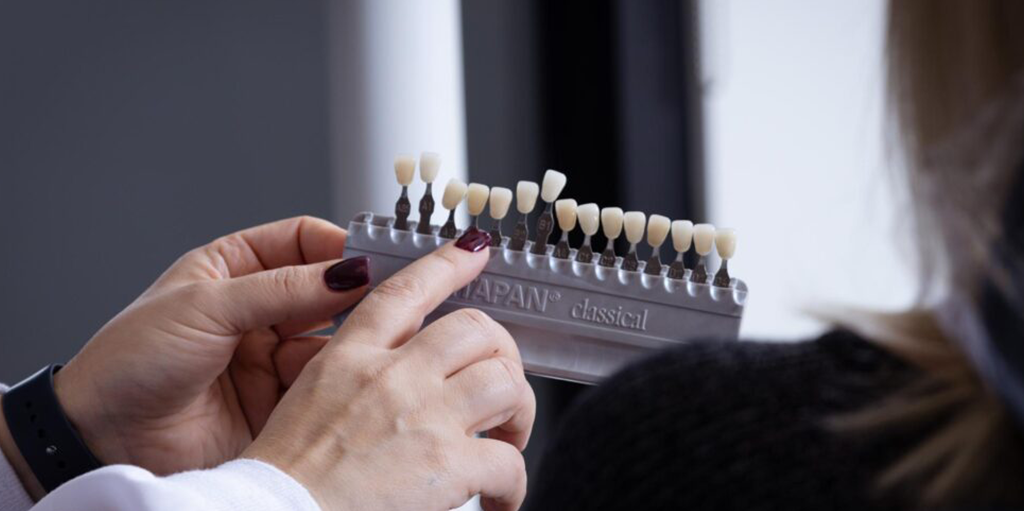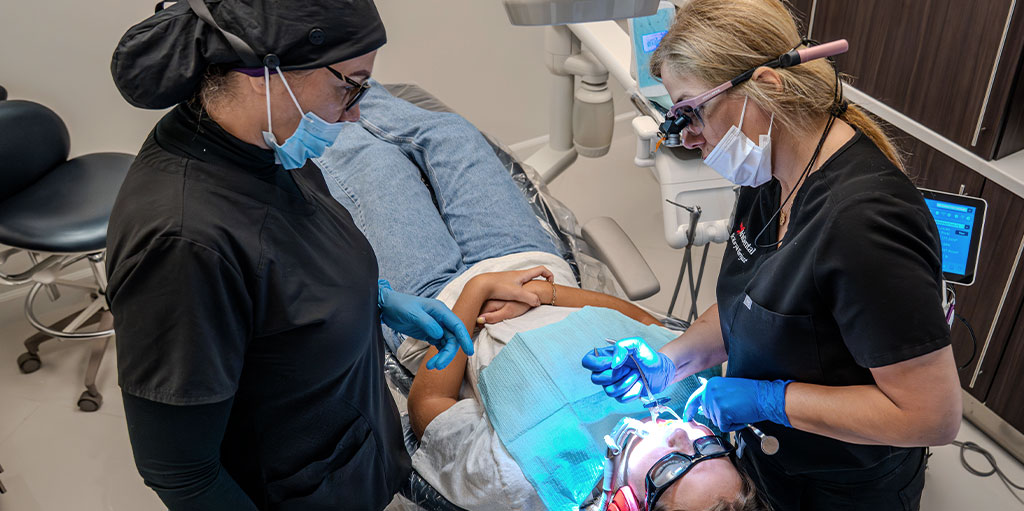Gum recession is a common and serious dental problem that usually goes unnoticed in its initial days. The reason is that its progression is very gradual. But your dentist can diagnose gum recession during regular dental appointments and intervene sooner. This article will give the solution to “how to stop gum recession”. It will also tell about the causes and symptoms of gum recession, as well as effective and successful treatment methods.
What Is Gum Recession?
Sometimes the gums, or tissue surrounding your teeth, begin to recede, meaning they pull back from your teeth, exposing certain areas of the tooth root. This is known as gum recession. Initially you will have increased sensitivity of your teeth. As it persists, though, your teeth are at greater risk of decay, and the bone underneath can be damaged. Gum recession is termed mild, moderate, or severe, and it can be localized on one tooth or multiple teeth.
What Are the Signs of Gum Recession?
These are signs of gum recession. If you notice one or some of these signs in your mouth, do not hesitate to visit your dentist.
- Sensitivity to eating cold, hot, or sweet things.
- Sensitivity during brushing and flossing.
- Sensitivity during tooth cleaning.
- Bleeding gums upon tooth brushing.
- Bleeding gums after eating with hard foods.
- Sensation of pain or discomfort near the gum line.
- Seeing a space between the gum line and the teeth.
- Teeth longer than usual.
- Visibility of roots of the teeth.
- Loose teeth.
If you are experiencing these symptoms, don’t worry and simply call us. At Aria Dental, we’re ready to serve you with the most appropriate treatment, incorporating holistic and biological dentistry in combination with advanced technology.
Why Do Gums Recede?
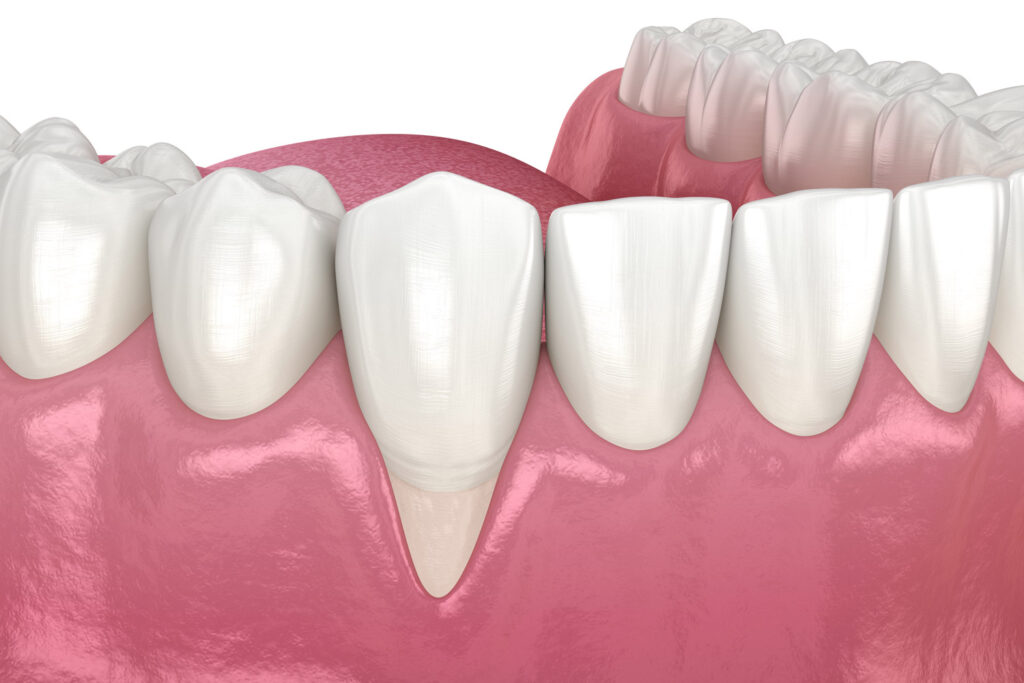
If you want to know “How to Stop Gum Recession,” you first need to understand its cause. Let’s find out the most important causes of gum recede:
Poor Oral Hygiene
Gum recession is greatly caused by poor oral hygiene. If you skip brushing and flossing your teeth on a regular basis, you will have some issues in your mouth. Bacteria in the mouth build up on tooth surfaces and between teeth and gums over time and get stuck together in an adhesive film called plaque. Plaque hardens to tartar (calculus) if not cleansed. It can be prevented by proper brushing, but tartar is eliminated through professional removal. Tartar accumulation between gums and teeth can lead to tooth decay and gum recession.
Poor Brushing Techniques
Brushing is crucial, but the brushing method is also very important. Brushing too hard or using incorrect methods can unintentionally wear away tooth enamel and damage delicate gum tissues, further causing recession.
Periodontal Disease
More serious gum diseases, especially periodontitis, are directly linked to gum recession. In fact, infection and inflammation from these types of diseases kill the gum tissue and bone that hold the teeth in place, displacing the gums away from the teeth and causing them to recede.
Smoking or chewing tobacco use
Tobacco consumption causes gum disease, including gum recession, in five ways:
- Weak immune response
- Chemicals and toxins damage gum tissue
- Reduced blood supply
- Decreased saliva flow
- Plaque and tartar buildup
How to Prevent Gum Recession?
Receding gums don’t grow back. So the best way to protect your gums is to know how to stop gum recession. Let’s get familiar with the best methods to prevent gum recession.
Brushing And Flossing
Brushing your teeth is definitely one of the most important things you can do to prevent gum recession. But there are some things to keep in mind. First, learn the proper way of brushing your teeth and brush at least twice a day. Second, use a soft toothbrush and avoid brushing too hard. And third, observe the color, size, and condition of your gums during brushing. Aside from brushing, flossing is also crucial in the removal of plaque between your teeth. Floss once a day and learn the proper way of flossing your teeth.
Stop Smoking and a Healthy Diet
Quitting smoking will benefit the health of your mouth and teeth. If you are unable to quit, then cut down on the smoking. Reduction in alcohol and a healthy diet can also soothe gum inflammation and prevent gum recession. Eat food that contains antioxidants and omega-3s, and include fruits and vegetables in your diet.
Regular visits to the Periodontist
A visit to the dentist can be a little stressful for some people, but gum recession is much easier to handle in its early stages. If you’re genetically predisposed to this condition or notice any signs of gum recession, visit a dentist or periodontist right away.
Gum Recession Treatments
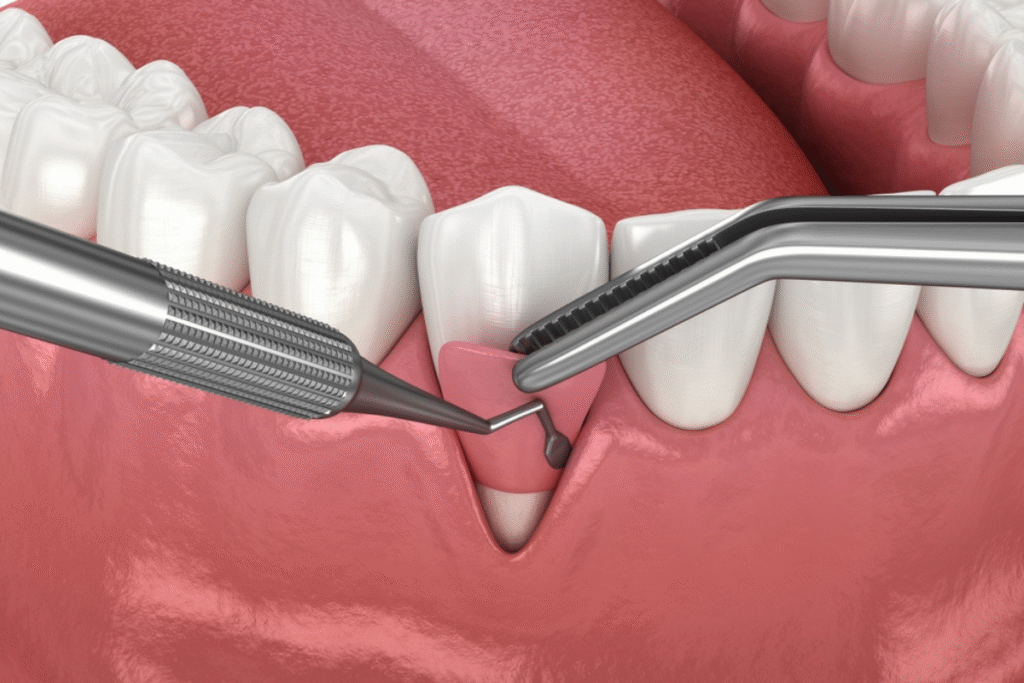
The treatment for receding gums ranges from medication to surgery. What would be suitable for you will be determined by your case and your dentist’s preference.
Deep Cleaning
As hinted earlier, you are able to clean plaque from your teeth by brushing and flossing daily. Your dentist may at times recommend a deep cleaning, though. The reason for this is that the tartar cannot be removed by daily brushing. If gum disease has caused your gums to pull away from your teeth and a space greater than 5mm in depth is formed, you may need to undergo a deep cleaning.
This process removes plaque and tartar below your gums and cures any infection or inflammation that is present. It reduces the space between your teeth and gums by removing the plaque, which makes your gums reattach to your teeth. Remember that deep cleaning only cures slight erosion, and after the process is completed, antibiotics are at times prescribed to completely eliminate bacteria.
Medication
Another treatment for mild gum recession is drug prescriptions and using antibiotics. This treatment will only be effective when prescribed in the right conditions, with the right dosage, and under the supervision of a specialist.
If gum recession is caused by bacterial diseases, the dentist will completely disinfect the gums and teeth after numbing the gums to get rid of the bacteria that have formed around the gums and teeth, and then completely solve the problem by taking antibiotics.
Dental Bonding
Sometimes your dentist can cover the area of gum recession with a tooth-colored composite resin. This material is called a bond because it bonds to the original tooth. This covers the root of your exposed tooth, making it less visible. Dental bonding is relatively inexpensive and is usually done in one appointment. However, drinking coffee, tea, alcohol, and smoking can stain the bonding material and cause it to separate from the rest of your teeth.
Surgical Treatment
The best way to treat very advanced gum recession is with a gum graft or restoration surgery; in this procedure, the periodontist uses a gum graft to replace your lost gum, and this tissue is usually taken from the roof of your mouth; but if the roof of your mouth tissue is not suitable, tissue from another person is used. This surgery can also be performed with a laser and without hands, and the dental surgeon will choose one of the methods depending on your needs.
You can learn more about what gum recession is here.
When Should You Visit A Periodontist?
If you notice your gums pulling away from your teeth, exposing more of the tooth or even its root, it might be time to visit a periodontist. Gum recession is often a sign of underlying periodontal disease, and a periodontist specializes in diagnosing and treating these issues. While early gum recession might seem like a minor cosmetic concern, it can lead to increased tooth sensitivity, higher risk of decay, and eventually tooth loss if left untreated. A general dentist may identify early signs, but a periodontist has the expertise to assess the severity and recommend advanced treatments like deep cleaning (scaling and root planing), gum grafting, or regenerative procedures.
You should also see a periodontist if your gum recession is progressing or if you’ve already had treatments that haven’t stopped the problem. Factors like aggressive brushing, genetics, or misaligned teeth can all contribute to gum recession, and a periodontist can help identify and manage these root causes. Early intervention is key to preserving the health and stability of your teeth. With the right care plan, a periodontist can not only stop further gum loss but also restore the gum line and protect your smile long-term.




